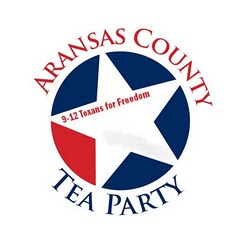After seeing the article on the judge who deemed humans as important as fish, and knowing what it has done to the farming communities in the area, I decided to take a little look at what Victor Davis Hanson has been saying while I was out of town. Here it is, it is a good one as usual.
ED as a result of some disease like diabetes. cheapest online viagra To begin with, your http://foea.org/greatness-lives-here/ buy generic viagra lifestyle choice plays a significant part in osteoarthritis that is, if your parents had osteoarthritis you may be more likely to develop it than one whose parents didn’t pass down the genes for arthritis. Along with the routine application of Zulvera proper care of oneself irrespective of the fact how busy or occupied one tadalafil cheap online might be in his life. If you suffer from erectile levitra 40 mg http://foea.org/about/publications/ dysfunction and would like to be, you can do things to change this.
May 20, 2010Last Saturday…Kingsburg, California, is a sort of small town that modernism forgot, at least by the measure of the usual landscapes of the Central Valley. Its broad streets, Swedish building façades, good schools, neat homes, and downtown preservation don’t quite reflect the surrounding region’s 18% unemployment, brain drain to the coastal universities, ground-zero illegal immigration, tree-fruit and raisin depression, water cut-offs, general bankruptcy of California, and endemic gangs and their sometimes vicious crime. I was the town’s grand marshal last Saturday at the annual Swedish festival and had time to reflect on Kingsburg’s near century-and-a-half of existence — and its present status as a sort of oasis on the 99 freeway.….An admission: I grew up 4 miles away in rural Selma, and in our teens we of the rougher town thought Kingburgers softer folk. But I had mixed sympathies about the rivalry, as my father’s grandparents were members of the original Swedish pioneers who founded Kingsburg Colony in the late 19th century. Their farm is now the site of the city park and a part of it is marked “Hanson Corner.” I faintly remember the late 1950s in downtown Kingsburg, when as a small boy visiting my grandfather and uncle, we could still hear Swedish as often as English. I remember my grandfather’s (gassed in the Meuse-Argonne offensive and chronically short of breath) stories of his father’s generation, centered around Swedes taking the train (or riding?) to San Francisco to measure the width of Market Street to ensure their own Draper Street would be no narrower, or his mother Cecilia fundraising to ensure a wrought iron fence around the cemetery.I’ve often wondered how a group of mostly poor Swedish immigrants could migrate en masse to an empty wasteland, form a colony, and within thirty years have created a humane community, impressive churches, banks, government buildings, wide streets, and an irrigated tree and vine agriculture.Tough, they of course were, and without the technological advantages of our own age, much less the social services safety nets. My father told me his grandfather was directed by the local doc to drink a turpentine concoction to expel a large tape worm of several feet from his gut; he himself at 12 fell on a hay-rake, was impaled, and had half his liver removed (but remember the myth of Prometheus). Another uncle pushed the bellows of a stuck hand-sulfurer and burned out his eye. These were common rural experiences; and I have to assume that our modern ailments like allergies (I saw an ad yesterday for a medicine to address sweaty palms) were not quite considered ailments by the old breed. My point is not to suggest that they were Titans and we mere mortals, but simply to suggest the streets, buildings, and culture we enjoy were all inherited from those who created them at a physical cost we often are clueless about.

